“Victory in the future requires a force consisting of the many, small and smart. The United States and its Joint Force needs to get there first, and when it does, it needs to be aware of any advantages—and limitations—these new capabilities will provide.” — Mr. Jeff Becker, from his article entitled, “How to Beat Russia and China on the Battlefield: Military Robots,” originally published in The National Interest on 18 March 2018.
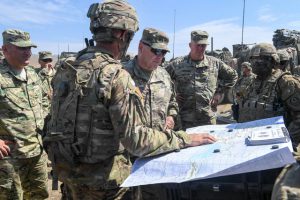 In 2016, General Mark Milley, Chief of Staff of the Army, asked if the Army of the future would have divisions and brigades, or whether it would utilize small, elite Special Forces-like units with operational and strategic level capabilities. At the U.S. Army Annual Meeting and Exposition, General Milley stated, “I suspect that the organizations and weapons and doctrines of land armies, between 2025 and 2050, in that quarter-century period of time, will be fundamentally different than what we see today.” There is a need to change, perhaps radically, some of our organizational unit designs that will allow the Army to operate on the battlefield of the future, which will be dispersed and dangerous across all domains.
In 2016, General Mark Milley, Chief of Staff of the Army, asked if the Army of the future would have divisions and brigades, or whether it would utilize small, elite Special Forces-like units with operational and strategic level capabilities. At the U.S. Army Annual Meeting and Exposition, General Milley stated, “I suspect that the organizations and weapons and doctrines of land armies, between 2025 and 2050, in that quarter-century period of time, will be fundamentally different than what we see today.” There is a need to change, perhaps radically, some of our organizational unit designs that will allow the Army to operate on the battlefield of the future, which will be dispersed and dangerous across all domains.
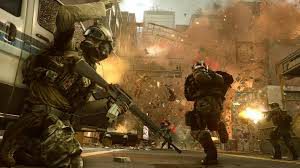 To mitigate and disrupt the threat from state and non-state actors with drastically improved reconnaissance – persistent Intelligence, Surveillance, and Reconnaissance (ISR), electronic detection capabilities, and a saturation of sensors – and extremely lethal strike capabilities – thermobarics, penetrators, dual warheads, hypersonic weapons, long-range artillery, strike and interdiction aircraft – the U.S. Army must consider how to assemble and combine advanced capabilities into technologically-superior land units able to attack and destroy larger enemy units, maneuver over the land domain, and seize and hold terrain in support of these missions. Additionally, these forces must have organic, or at least more readily available, cyber, space, and information warfare capabilities.
To mitigate and disrupt the threat from state and non-state actors with drastically improved reconnaissance – persistent Intelligence, Surveillance, and Reconnaissance (ISR), electronic detection capabilities, and a saturation of sensors – and extremely lethal strike capabilities – thermobarics, penetrators, dual warheads, hypersonic weapons, long-range artillery, strike and interdiction aircraft – the U.S. Army must consider how to assemble and combine advanced capabilities into technologically-superior land units able to attack and destroy larger enemy units, maneuver over the land domain, and seize and hold terrain in support of these missions. Additionally, these forces must have organic, or at least more readily available, cyber, space, and information warfare capabilities.
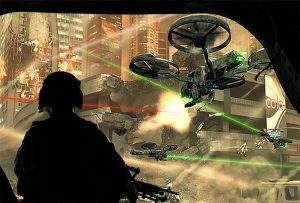 The need for these land forces to operate in and across multiple domains prompted General Milley to order the creation of an experimental combat unit known as the Multi-Domain Task Force. The Army recognizes that future combat units will have to be moderately self-sustaining, highly lethal, very fast, and very difficult to pin down on a battlefield; current Army force structure does not provide units that can maneuver and operate in this vein. The Multi-Domain Task Force will be the test bed for a concept of operations and force structure that moves beyond just countering adversarial anti-access and area denial (A2/AD) capabilities and will incorporate larger Joint efforts for maneuver and combat operations in the future.
The need for these land forces to operate in and across multiple domains prompted General Milley to order the creation of an experimental combat unit known as the Multi-Domain Task Force. The Army recognizes that future combat units will have to be moderately self-sustaining, highly lethal, very fast, and very difficult to pin down on a battlefield; current Army force structure does not provide units that can maneuver and operate in this vein. The Multi-Domain Task Force will be the test bed for a concept of operations and force structure that moves beyond just countering adversarial anti-access and area denial (A2/AD) capabilities and will incorporate larger Joint efforts for maneuver and combat operations in the future.
Beyond the challenges and opportunities for operational forces more equivalent to today’s brigade combat teams, there is growing concern over the loss of technological and mobility overmatches the Army has possessed for the last 15 years at the tactical level. 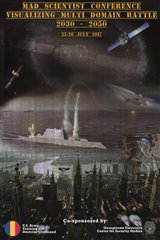 To explore this problem, Mr. Jeff Becker, President and Principal Analyst of Context LLC (and Mad Scientist Laboratory guest blogger), spoke at the Mad Scientist Visualizing Multi Domain Battle Conference at Georgetown University, 25-26 July 2017, about what the tactical system of the Army might look like in the 2035-2050 timeframe. In his video presentation from this conference, Mr. Becker addressed just how lethal, how mobile, how protected, and how aware a very small – 12-15 person – unit on the future battlefield might be. He presented the concept for a Multi-Domain “Dragoon” Squad (MDS), a hyper-enabled combat system composed of numerous future technologies allowing the tactical unit to have multi-domain effects.
To explore this problem, Mr. Jeff Becker, President and Principal Analyst of Context LLC (and Mad Scientist Laboratory guest blogger), spoke at the Mad Scientist Visualizing Multi Domain Battle Conference at Georgetown University, 25-26 July 2017, about what the tactical system of the Army might look like in the 2035-2050 timeframe. In his video presentation from this conference, Mr. Becker addressed just how lethal, how mobile, how protected, and how aware a very small – 12-15 person – unit on the future battlefield might be. He presented the concept for a Multi-Domain “Dragoon” Squad (MDS), a hyper-enabled combat system composed of numerous future technologies allowing the tactical unit to have multi-domain effects.
The MDS provides the Army with a small unit capable of tactical surprise and an enormous capability for close-in lethality. The crux of the MDS is a system-of-systems approach to enabling a small tactical unit with the capability to survive, thrive, and bring about effects across domains throughout the tactical environment in a terrain-agnostic way.

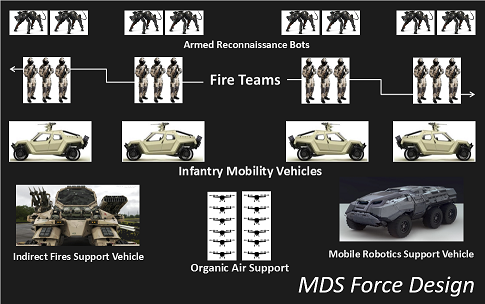
This approach is achieved through multiple technological implementations:
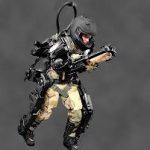 – Equipping of soldiers with soft “exosuits” to increase their strength and endurance, allowing for heavier and more capable individual weaponry and the ability to sustain peak performance
– Equipping of soldiers with soft “exosuits” to increase their strength and endurance, allowing for heavier and more capable individual weaponry and the ability to sustain peak performance
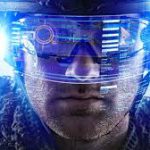 – Lightweight helmet-mounted displays providing augmented and virtual reality images based on feeds from sensors – including cyber and electromagnetic environments to reach new levels of close-in situational awareness
– Lightweight helmet-mounted displays providing augmented and virtual reality images based on feeds from sensors – including cyber and electromagnetic environments to reach new levels of close-in situational awareness
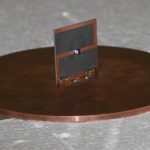 – Metamaterials allowing lower profile, higher bandwidth antennas integral to the soldier suit as well as the vehicles and robots
– Metamaterials allowing lower profile, higher bandwidth antennas integral to the soldier suit as well as the vehicles and robots
 – Modernized assault weapons including guided rounds, increasing the probability of a hit
– Modernized assault weapons including guided rounds, increasing the probability of a hit
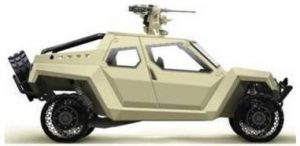 – Lightweight (4500 lbs.) Infantry Mobility Vehicles (IMVs) capable of semi-autonomy, autonomy, or remote-control as well as the ability to provide covering fire with a robotic turret and precision indirect fires weapons
– Lightweight (4500 lbs.) Infantry Mobility Vehicles (IMVs) capable of semi-autonomy, autonomy, or remote-control as well as the ability to provide covering fire with a robotic turret and precision indirect fires weapons
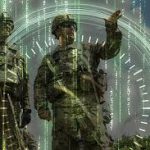 – Sensor system and associated AI capable of detecting, locating, classifying and prioritizing multiple targets, while providing early warning to fire team
– Sensor system and associated AI capable of detecting, locating, classifying and prioritizing multiple targets, while providing early warning to fire team
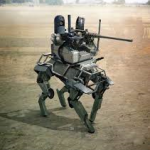 – Eight armed reconnaissance robots able to move over ground at speeds in excess of 40-50 miles per hour; capable of traversing complex terrain quickly and closing with areas of interest at high speed; potential for lethal capability
– Eight armed reconnaissance robots able to move over ground at speeds in excess of 40-50 miles per hour; capable of traversing complex terrain quickly and closing with areas of interest at high speed; potential for lethal capability
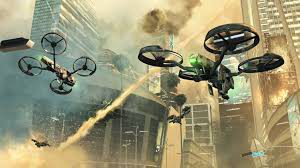 – Short range, low altitude quadcopter drones providing optical and electronic sensing to the unit, providing constant updates to the AR/VR backbone; potential for lethal capability
– Short range, low altitude quadcopter drones providing optical and electronic sensing to the unit, providing constant updates to the AR/VR backbone; potential for lethal capability
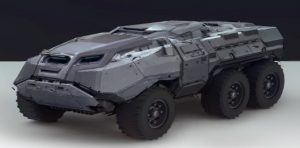 – Squad Indirect Fires Support Vehicle (SIF-V) providing a range of indirect fires directly to each team
– Squad Indirect Fires Support Vehicle (SIF-V) providing a range of indirect fires directly to each team
The MDS is not the all-encompassing zenith of the MDB concept but rather is a machination of it at the tactical level that could have a ground-up cumulative change effect. It is impossible for the Army, nor any of its sister services, to completely transform within a decade; however, sweeping organizational experimentation and reconfiguration of existing formations through initiatives such as the Multi-Domain Task Force can lead to such a transformation.
Mr. Jeff Becker’s vision for the MDS was originally submitted in response to a Mad Scientist Call for Ideas that was subsequently published here by Small Wars Journal.
Mr. Becker and MG David Fastabend (USA-Ret.) co-authored a paper that was the baseline and inspiration for The Operational Environment and the Changing Character of Future Warfare on behalf of the TRADOC G-2.
Mr. Becker and MG Fastabend were also key analytical contributors to the Robotics, Artificial Intelligence & Autonomy: Visioning Multi-Domain Warfare in 2030-2050 Final Report that documented the results of the associated Mad Scientist Conference, co-hosted by Georgia Tech Research Institute, on 7-8 March 2017.



You guys make me laugh. Today, our dismounted patrols cannot see insurgents shooting at them and blowing them up from just 500-meters away. The Army and its scientist contractors lack the common sense to even acknowledge this fact let alone do anything about it. From my combat experience in Southeast Asia, Iraq and Afghanistan, our dismounted patrols are still walking outside-the-wire with the same basic equipment I carried in the central highlands of Vietnam almost 50-years ago.
If you look at the paper, it is precisely this 5 meter to 5 km fight we can do better at.
The Multi-Domain “Dragoon” Squad: A Hyper-enabled Combat System
Again there is a visualization of a lighter, smaller force, which conceptually is a problem given a motivated insurgent, or a larger conventional force, armed with redundant “dumb” systems or previous iterations of legacy technologies. If as we envision, future combat as taking place in networked, mega-cities none of this is necessarily capable of subduing a foe. The very nature of the terrain will block signals, funnel acoustic signatures, limit the effectiveness of precision fires and funnel small units into planned kill zones. If smaller, extremely lethal forces are indeed the goal there has to be a greater degree of protection for the individual soldier; sending the above proposed force into urban terrain with degraded connectivity due to enemy use of advanced A2/AD capabilities would be a suicide mission. We know now that China, Russia and others seek to degrade or deny the very technologies these proposals are predicated upon). Does it need to be said that 20,000 people with AK-47s, Molotov cocktails and RPGs would still rapidly defeat a task force (+/- 3000) of these light troops in constrained terrain.
The key technology necessary to truly enable such a military force to operate as smaller, man-based units will be the development of a power source sufficient to motivate an armored, exo-skeletal platform to operate in such a fashion. I applaud the thinking, but every time militaries have sought to exchange protection for mobility the lighter force tends to suffer… in short; speed (gained from any source) is not armor.
Major,
Thanks for your thoughtful comments here. Compelled to reply to your conclusion — “speed is not armor” and i couldn’t agree more. This squad level unit along these lines will not be the whole Army. We’ll need future “heavy” units, whatever those may look like as well. My bigger point is that we can do a great deal to improve the performance of light motorized units along the four dimensions of lethality, mobility, protection, and awareness in ways that will give the Army some advantages at the small unit level. Not the whole solution, but one small part of a very large modernization project.
The constrained nature of a blog post cannot do justice to Mr. Becker’s MDS concept… recommend folks review his original article, published by our colleagues at Small Wars Journal at: http://smallwarsjournal.com/jrnl/art/how-lethal-mobile-protected-and-aware for a comprehensive understanding of his proposed concept.
Mr. Becker,
Point taken, however, in advance of re-reading your SWJ article, I have a serious question. How do you envision said conceptual unit defeating/operating effectively given the increasing pace and sophistication of state and non-state actors ability to contest us in the Space, Cyber and EM spectrum warfare. Domains upon which our future force is being built, domains that also present a fatal vulnerability if we fail to maintain not just parity, but superiority?
Small, fast, light, are good, but when sensors are defeated they must be incredibly lethal to make up for the lack of armor. We (US and Western Europe) are trending to fewer more precise, lighter more focused lethality weapons systems enabled by better sensors. Combat missions with these small teams against a near peer in equipment (I would have said “gear” but to much rhyming) other than a Counter Terror cell all would be at a significant disadvantage in numbers of fighters as well as lethal systems. If I am willing to lose 30 to kill 3, I win. 3 man teams must sleep and maintain, monitor, sustain and all that comes with combat ops. Small is short duration only. This looks more about augmented SOF like teams versus a sustained combat unit.